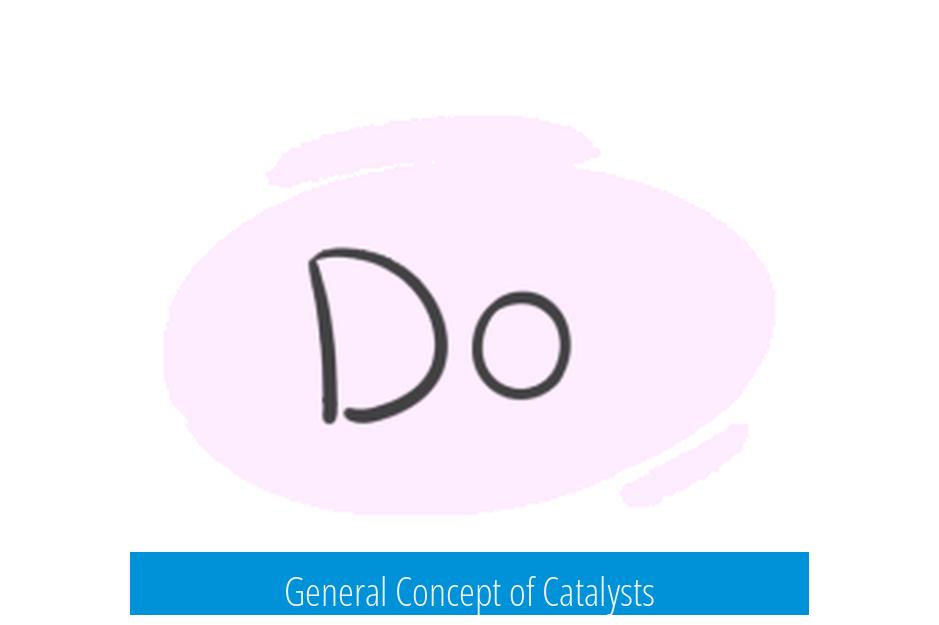How Do Catalysts Actually Work?

Catalysts accelerate chemical reactions by providing alternative pathways with lower activation energy, forming transient intermediates, and modulating reactant properties, all without being consumed in the process. They enable reactions that would otherwise occur slowly or not at all by changing how reactants interact and proceed towards products.
General Concept of Catalysts

Catalysts offer different mechanisms that make reactions faster or more feasible. They allow reactants to interact in ways normally unlikely without the catalyst’s presence. This often involves holding reactants in specific orientations to promote favorable collisions, increasing the chance that molecules react.
Many metal catalysts offer alternative reaction pathways with the same start and end points as the original reaction. These pathways break difficult transformations into easier, smaller steps. This lowers the overall energy barrier, allowing reactions to proceed more smoothly.
Lowering Activation Energy by Forming Intermediates
Catalysts lower the activation energy by stabilizing intermediate species that form during the reaction. Instead of one high-energy step, the reaction proceeds via multiple lower-energy intermediates. This is often shown as a double peak in an energy diagram rather than a single peak.
For example, metal ions or Lewis acids coordinate with reactants, altering their electronic structures. In Friedel-Crafts Acylation, Lewis acids pull electron density from a carbonyl compound, increasing its electrophilicity and making it more reactive.
Reversible Interaction with Reactants
Catalysts bind reactants weakly and reversibly, forming complexes that ease the progress toward products. For instance, a catalyst (C) may form a complex with reactant A (A–C complex), changing electron distribution within A and making it more reactive.
The bonds between catalyst and intermediates are weak, allowing the catalyst to release the product and return to its original form. This cycle enables continuous catalysis without catalyst consumption. The typical reaction cycle looks like:
A + B → P (slow) A + Cat ⇌ A–Cat (fast, reversible) A–Cat + B → P–Cat (fast) P–Cat ⇌ P + Cat (fast, reversible)
Effect on Reaction Rates and Equilibrium
Catalysts speed up both forward and reverse reactions equally. They do not change the position of chemical equilibrium but allow the system to reach equilibrium faster. If the product is much lower in energy than the reactants, the reaction proceeds to completion more quickly with a catalyst.
Analogies to Understand Catalysts
- Nutcracker analogy: Without a nutcracker, cracking a nut by hand is difficult. The nutcracker provides a different approach that makes cracking easier. It can be reused many times, just like catalysts.
- Wishbone analogy: Breaking a wishbone requires force. A catalyst pre-stretches the wishbone, so less force is needed to snap it. This pre-activation mirrors how catalysts lower energy barriers.
Mechanistic Details and Specific Interactions
Catalysts often work via defined mechanisms involving particular molecular interactions. Metal catalysts facilitate unique steps such as oxidative addition and reductive elimination that organic molecules cannot achieve alone.
In acid- or base-catalyzed systems, catalysts produce stronger nucleophiles or electrophiles, such as hydronium (H3O+) or hydroxide ions (OH−), enhancing reactivity. Post-reaction, these catalyst species regenerate.
Some catalytic processes involve complex surface chemistry. For example, partially oxidized alcohols react over hot copper catalysts, leading to oxygen transfer through a copper oxide layer rather than direct oxidation.
Changing Reactant Electronic Properties
Catalysts alter electron distribution in reactants by forming complexes, making certain atoms more positively or negatively charged. This modulation enhances the likelihood of bond breaking or formation during the reaction.
Lewis acids illustrate this concept well by withdrawing electron density, thus increasing the electrophilic character of specific sites on molecules, such as in carbonyls, enabling faster reaction steps.
Summary of Key Points
- Catalysts provide alternative pathways with lower activation energy, speeding up reactions.
- They form transient intermediates that are easier to generate and convert into products.
- Catalysts bind reactants reversibly, modifying their electronic properties without being consumed.
- They accelerate reactions in both forward and reverse directions, speeding up equilibrium without shifting it.
- Metal catalysts and acid/base catalysts operate via specific mechanisms involving electron coordination and ionization.
- Catalysts act as molecular tools, enabling reactions by pre-activating or orienting reactants.
- They change reactant electron distributions to weaken or strengthen bonds, facilitating chemical transformations.
What does it mean when catalysts provide an “alternative pathway” for a reaction?
Catalysts create a different route for the reaction to occur. This pathway lowers the energy needed and often breaks a big step into smaller, easier steps. It helps reactants interact in ways they normally wouldn’t.
How do catalysts lower the activation energy of a reaction?
Catalysts form intermediate states that require less energy than the direct reaction. These intermediates make it easier for reactants to transform into products, speeding up the reaction.
Why do catalysts interact weakly and reversibly with reactants?
This weak and reversible bonding changes the reactants’ properties, making them more reactive. After the reaction step, the catalyst releases the product and returns to its original form without being used up.
Do catalysts change the position of chemical equilibrium?
No. Catalysts speed up both forward and backward reactions equally, so they help the system reach equilibrium faster. They do not shift the balance toward products or reactants.
How do metals work as catalysts differently from acids or bases?
Metal catalysts allow unique reaction steps like binding molecules to their surface and altering bonds through electron transfers. Acid or base catalysts change water into stronger reactive ions that help the reaction proceed.





Leave a Comment